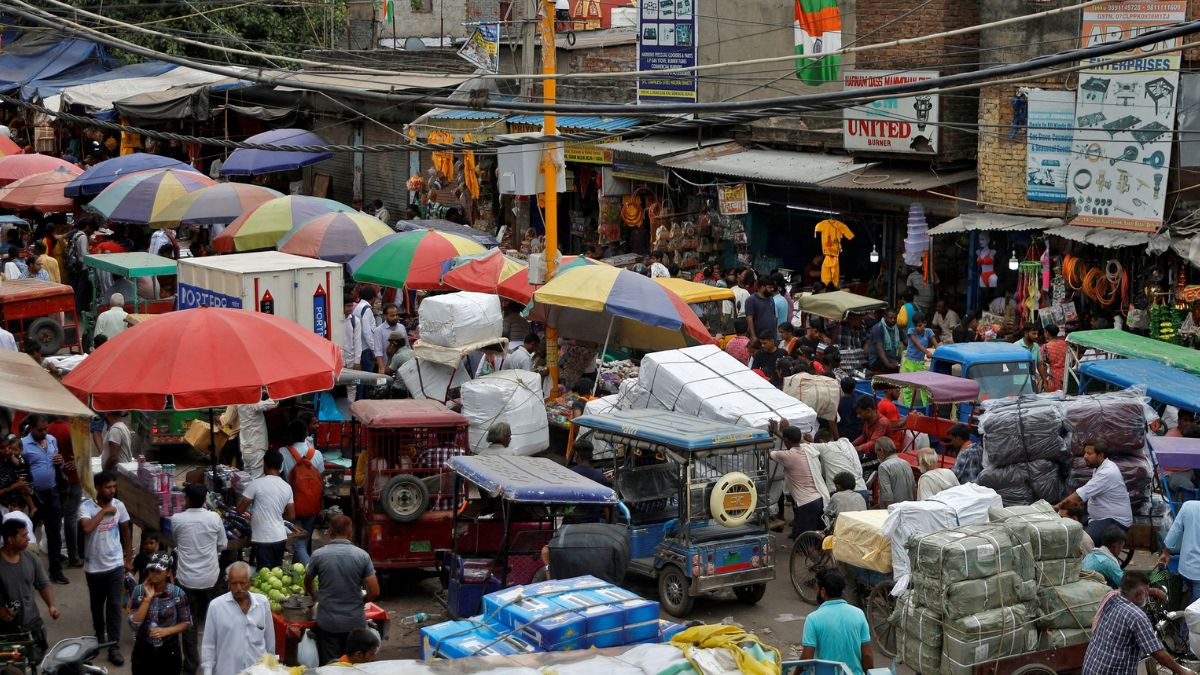Despite strong public spending-led growth in March quarter, FY 2026 GDP growth set to slow down: Here is why
 (File) A market in New Delhi, India | Reuters
(File) A market in New Delhi, India | Reuters
India’s economy gathered momentum in the January-March quarter, with the GDP growth accelerating to 7.4 per cent, its fastest growth over the past year, but things are seen slowing in the quarters ahead, amid global as well as domestic headwinds, reckon economists.
The strong GDP growth in the fourth quarter of the financial year ending March 2025 was largely driven by a strong push in capital expenditure by the government after sluggish first-half spending in the wake of Parliamentary and several state elections. Net indirect taxes growing close to 13 per cent also helped.
Despite the strong quarterly finish, the full year (2024-25) growth of 6.5 per cent was sharply lower than the 9.2 per cent surge in 2023-24. It was, in fact, the lowest in the past four years.
With global growth remaining uncertain in the wake of the geopolitical tensions and reciprocal tariffs imposed by the US likely to impact world trade, and sluggish private investment back home, India’s GDP is likely to remain in the 6.0-6.5 per cent range, although it will still remain the fastest growing major economy.
“Financial year 2026 will be marred by global uncertainties weighing on corporate investment intentions and export growth, while falling urban income growth will weigh on private consumption. However, this could partly be countered by continued monetary easing via policy rates and liquidity and through regulatory easing, even as fiscal policy will have limited conventional levers to propel higher growth,” said Madhavi Arora, lead economist at Emkay Global Financial Services.
Arora has revised the GDP growth forecast for the year ending March 2026 to 6.0 per cent from 6.5 per cent. The Reserve Bank of India, in its latest annual report, has projected India’s GDP to grow at 6.5 per cent this year.
“Investments, mainly from the public side, have outshone while private capex remains tepid, albeit expected due to the global and economic frictions leading to some hesitation in the market. The investment-led recovery is welcome, but its long-term impact on productivity and employment will depend on whether it triggers multiplier effects through backward linkages and SME participation,” opined Sankar Chakraborti, MD and CEO, Acuite Ratings & Research.
Soumya Kanti Ghosh, group chief economic adviser at State Bank of India, expects the GDP to grow around 6.3-6.5 per cent in 2025-26.
“We believe that the Indian economy is poised to remain the fastest growing major economy in FY26 by leveraging its sound macroeconomic fundamentals, robust financial sector and commitment towards sustainable growth. The downside to growth emanates from external and geopolitical factors,” he said.
Dharmakirti Joshi, chief economist at Crisil, expects the economy to grow at 6.5 per cent in the current financial year as well, with downside risks.
“Consumption will remain robust in the current financial year, buoyed by favourable domestic factors such as normal monsoon patterns, the transmission of interest rate cuts by the RBI and the middle-class income tax benefits. These latter two factors are expected to bolster urban consumption and complement the strong rural demand. However, investment demand is likely to remain sluggish, as elevated uncertainty will dampen corporate investment appetite, and public investment is planned to grow at a slower rate compared to fiscal 2025,” said Joshi.
Paras Jasrai, associate director at India Ratings and Research, also noted that while a good monsoon, easing inflation, and monetary easing have brightened the prospects of robust consumption growth, the investment outlook remains hazy. Post the COVID19 pandemic in 2020-21, the government has done much of the heavy lifting in terms of investment. But, that government-driven investment growth can’t last forever, pointed Jasrai. At the same time, private sector investment participation is yet to take off on a durable basis.
“The reciprocal tariff is causing its shadow over global GDP and trade growth, which may force investors to postpone their investment decision. Weakness in global GDP and trade growth may have an impact on the current account and may pull down India’s GDP growth to some extent,” said Jasrai.
On the other hand, weak commodity prices due to slower global growth could have a favourable impact on India’s GDP, he felt.
The Reserve Bank’s monetary policy committee meets between June 4 and June 6. It has already cut the repo rate by 50bps to 6.0 per cent from 6.5 per cent, and it is widely expected that the MPC will cut rates again by 25bps this time around, with more cuts expected later. The cooling of inflation is providing more room for the central bank to focus on boosting growth.
Business